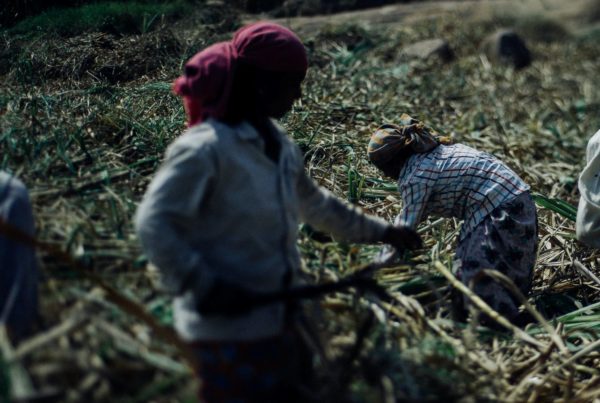Candidate: Thomas Ferreira
Supervisor: Professor Servaas van der Berg
Co-supervisor: Doctor Dieter von Fintel
Institution: Stellenbosch University, Faculty of Economic and Management Sciences, Department of Economics
Abstract:
In sub-Saharan Africa (SSA), poverty rates have declined, but the absolute number of poor has increased (Beegle et al., 2016). The poor are disproportionately found in rural households which practise smallholder agriculture. Poor data availability and quality have no doubt curbed poverty alleviation efforts. Smallholder agriculture is hard to measure and the statistical capacity of many developing countries in SSA is low (Carletto et al., 2015). In this environment, this thesis shows through three separate studies, how existing data and methods can be extended to overcome usual data deficiencies in SSA and enhance knowledge on welfare. In the rest study, econometric techniques used in analysis of the formal labour market are extended to understand the educational returns in agricultural productivity in Malawi. Poverty in Malawi is the typical pattern in SSA. The majority of the poor live and work in smallholder agriculture. In settings like these, schooling is believed to be a valuable tool in lifting people out of poverty. Yet, little is known about how schooling affects agricultural productivity. The effect of education on smallholder agricultural production has been estimated for countries in SSA but no studies deal with the endogenous nature of education in the production process. This chapter contributes to the literature by estimating for the first time, the causal effects of education on agricultural productivity in SSA. An instrumental variable (IV) approach is used, using the introduction of free primary education (FPE) and the age of paternal orphanhood as IV’s for education. The instruments are shown to calculate local average treatment effects for individuals who only entered school due to FPE and only left school due to paternal orphanhood. It is found that there are large differences in returns to education between the subgroups. Returns are low and insignificant when FPE is used as an IV but they are larger and there is a significant effect when age of paternal orphanhood is used. Thus, while education can have large effects on agricultural productivity, this is not so for most of the population, especially individuals specifically targeted by large scale expansions in educational access. The second study shows how existing satellite data can be used to enhance knowledge of welfare in rural agrarian areas where data on poverty is infrequent and only statistically representative for large geographic areas. Satellite data overcomes both of these limitations as small geographic areas are captured at high frequency. Night lights satellite data have been shown to correlate well with GDP but are not in areas that are not electrified, such as rural, agriculturally based communities in developing countries. This is why this study explores the use of daytime satellite data. Satellite data measuring land use and vegetation quality, have been used to model socioeconomic outcomes across regions, but no studies have explored whether daytime satellite data can be used to track welfare longitudinally. This study argues that indicators of vegetation quality, derived from satellite data, can be used to track welfare over time in agriculturally dominant areas. Such indicators are used extensively to predict agricultural yields and thus should correlate with welfare, as agriculture is an important source of income. This study explores whether this is the case using data from Namibia. Firstly, it is shown using classification of cropland, that daytime satellite data can identify areas of economic activity where night lights cannot. Secondly, the relationship between vegetation quality and welfare is studied. Crosssectionally, increases in vegetation quality correlate negatively with welfare. This is expected as the poor are more likely to live in rural areas. Within rural areas, however, vegetation quality correlates positively with welfare. This shows that vegetation quality can be used to track welfare over time in areas where night lights are not present. It can also do this at higher frequencies and smaller areas than household survey data. The final study shows how repeated cross-sectional data can be used to enhance knowledge on economic mobility, in a data deficient setting such as Namibia, where panel data does not exist. Namibia has experienced sharp declines in poverty over the last two decades, but in 2009/10 the headcount poverty rate was still 28.7%. Nothing is known, however, about the household dynamics of poverty and poverty reduction over the period as there is no panel data available. To overcome this limitation, this study exploits a method developed by Dang et al. (2014) that uses repeated cross-sections to estimate bounds on the joint probability of staying in or out of poverty, or moving into or out of poverty over two periods. The results showed that Namibia deals with both chronic and transitive poverty. Poverty is found mostly in rural agriculturally dominant areas. It was shown that across these regions, the dominant nature of poverty varies. Particularly, chronic poverty was dominant in the poorest three regions. In general, this thesis contributes by providing new information on the state of welfare and mobility of the poor in sub-Saharan Africa. This thesis also contributes by showing that even when ideal data does not exist, knowledge can be enhanced by the extensions of good methods, used in non-agricultural settings and data used for alternative purposes, such as commercial yield prediction. Finally, this thesis highlights the importance of acknowledging the links between poor households and smallholder agriculture. As is shown, survey data capturing these links are needed, and where it is available, it enhances knowledge on poverty and pathways out of it. Acknowledging the linkages also enables the use of alternative data sources, such as daytime satellites, to improve our understanding of welfare.
DOWNLOAD PDF





